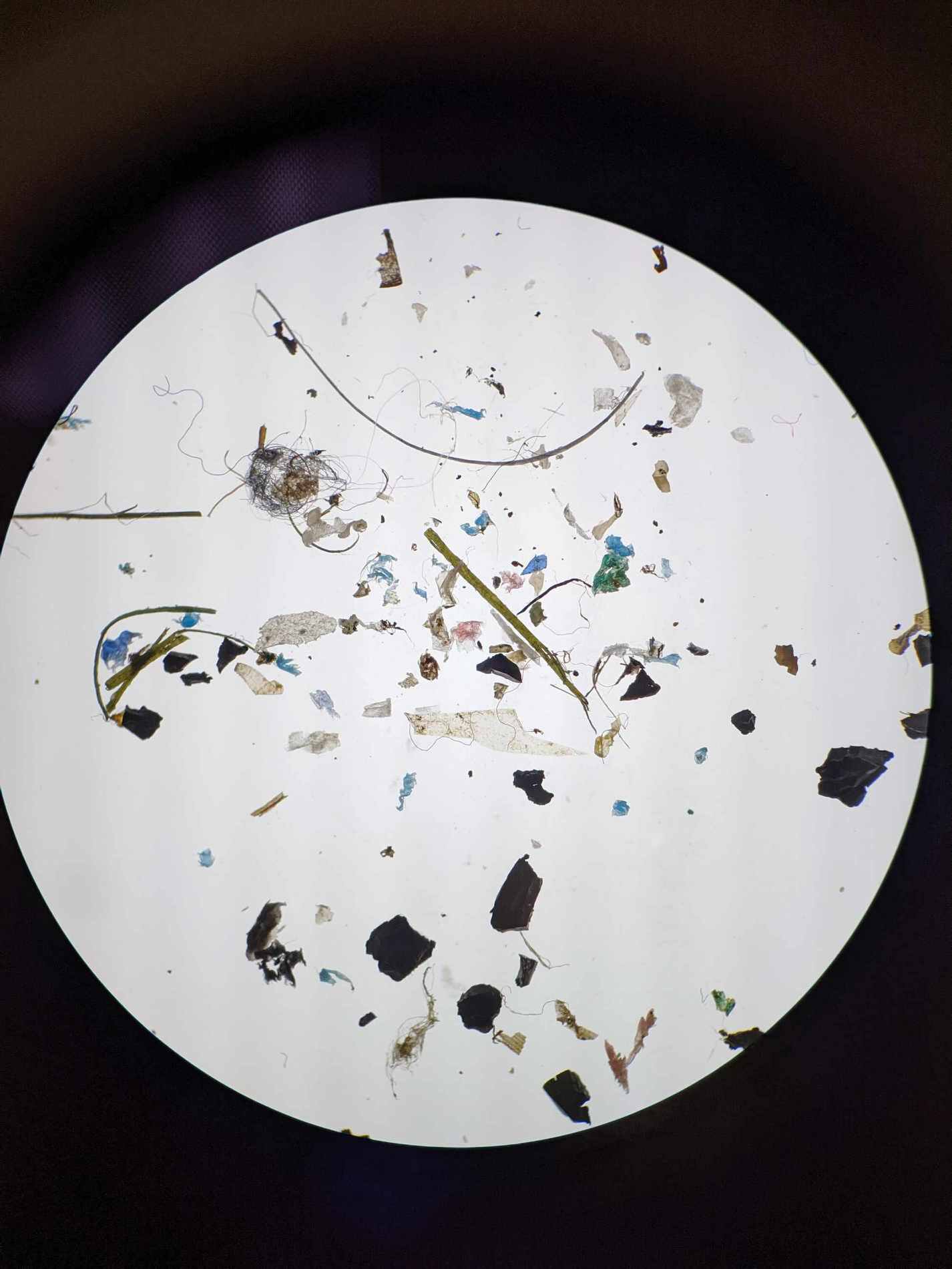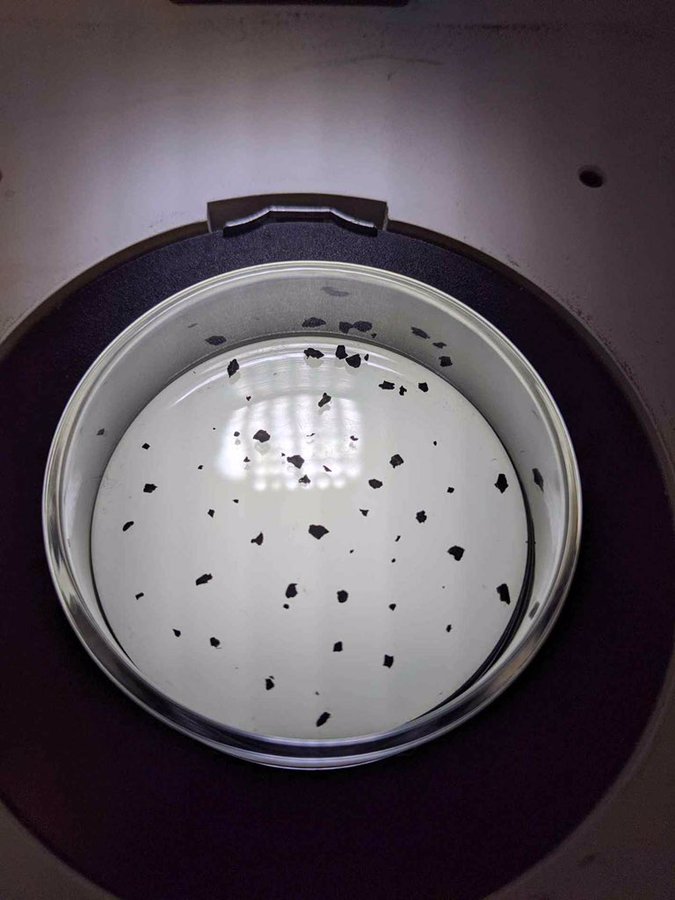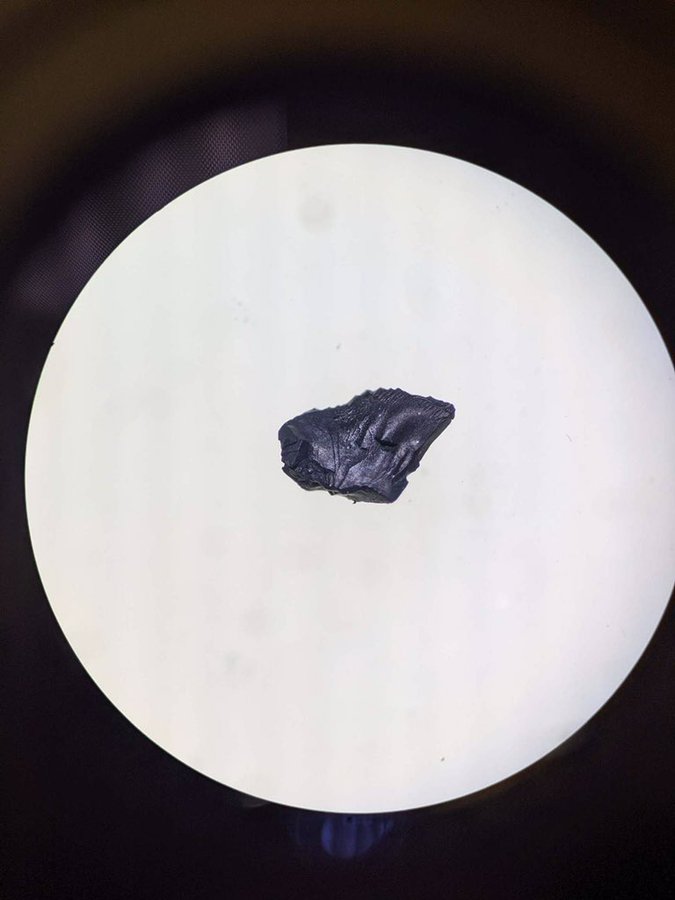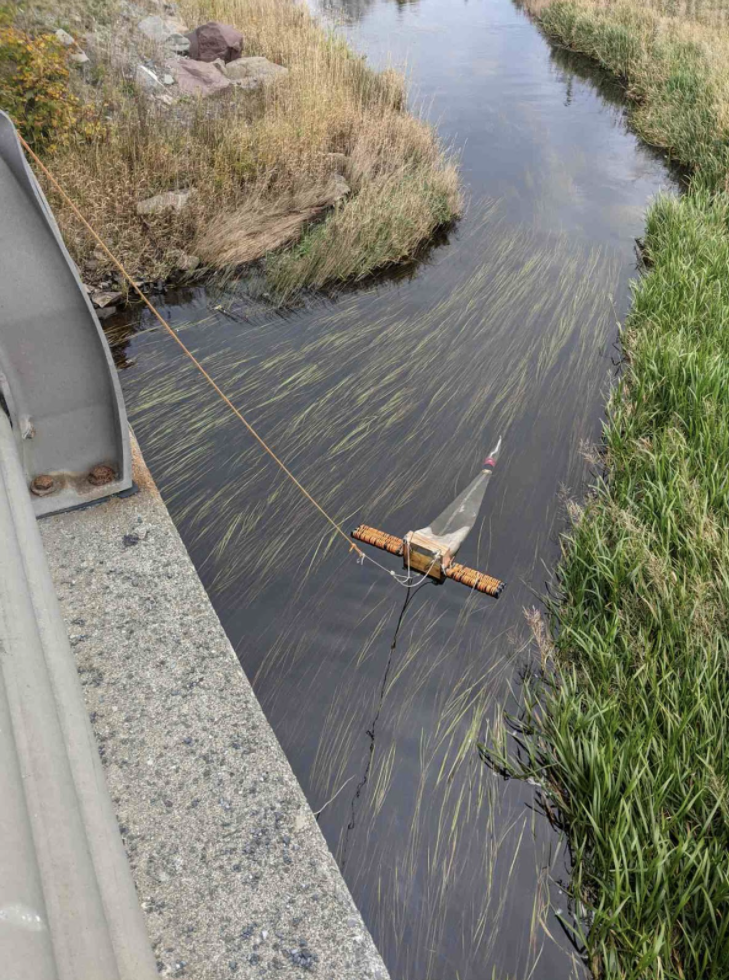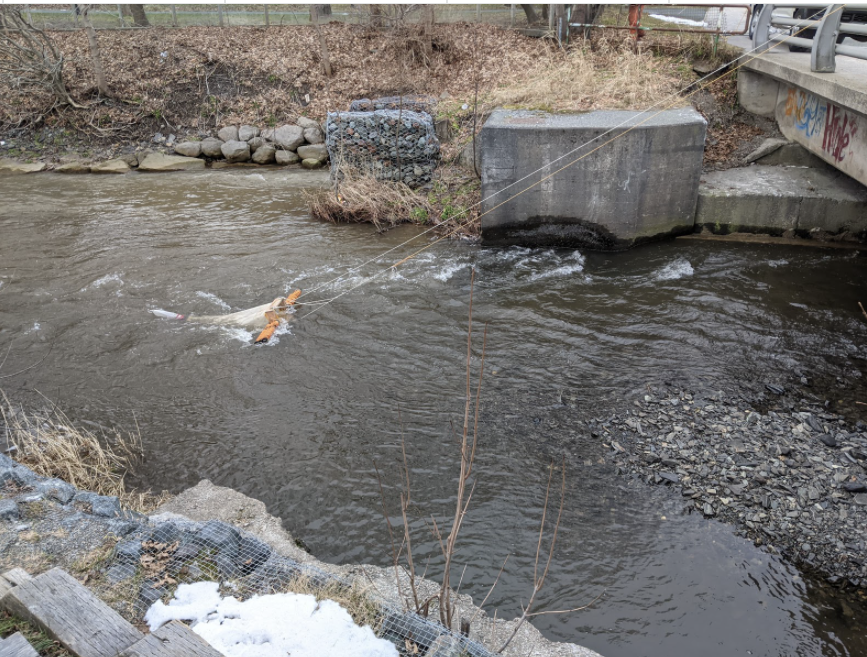Plastics have been found in every body of water and landscape in the world. Most of these plastics are microplastics smaller than a grain of rice (<5mm), which means they become part of ecosystems at every level. The following summarizes our research on plastics, focused on the state of pollution in Newfoundland and Labrador.
To date, we have recorded plastic ingestion figures (FO%, or the percentage of animals in a population that have ingested plastics) in Atlantic cod (1.68%), Capelin (0%), Salmon (0%), Silver hake (0%), Dovekies ( 30.4%), Northern fulmar (79%). We have found plastics in surface water at Holyrood (2016) at a density of 1.33 particles/km2. Shoreline studies have found plastic densities on shorelines is highly variable, but that plastics make up an average of 85% of shoreline waste on marine shorelines and 78% of waste in freshwater shorelines. We are currently conducting an urban waterway project monitoring microplastics in St. John’s in water and snow along Rennie’s River. We highlight plastic ingestion in fish and plastics on shorelines below. See our publications for more information.
CLEAR’s Regional report on plastic pollution in Newfoundland and Labrador, 1962-2019 synthesizes all available data on plastic pollution in the Canadian province of Newfoundland and Labrador from 1962 to 2019. The report synthesizes the findings from 57 sources, and covers plastics on shorelines, in surface water, and in sediment, plastics ingested by and that entangle animals, and plastics and other litter on land that can make its way into the ocean. Its comprehensive picture of plastics pollution in the region is designed for a wide range of users.
Plastic Ingestion in NL Fish
Since 2015, we have surveyed over 2000 fish from 4 different species, often with help from recreational and commercial fish harvesters. At the moment, Newfoundland and Labrador fishes have some of the lowest ingestion rates in the world! To get involved, see our page on how to collect guts for this research.
- Atlantic cod: 1.68% of over 1,000 cod ingested plastic. That’s just over 1 in 150 fish. These include nearshore and offshore fish from the east and south shores of Newfoundland. A recent study on Fogo Island cod found similar numbers. In Europe, other ingestion rates range from 1.2% to 13%.
- Capelin: 0% of 350 capelin ingested plastics. Capelin came from commercial fishermen on east and south shores of Newfoundland during the capelin roll in 2016. There are no other studies of plastic ingestion in capelin to compare our study to. Publication forthcoming.
- Atlantic Salmon: 0% of 69 wild-caught salmon had ingested plastics. These fish were from Campbellton River.There are no other studies of plastic ingestion in Atlantic Salmon to compare our study to. Publication forthcoming.
- Silver hake: 0% of 134 silver hake had ingested plastics. While silver hake are not caught for food in Newfoundland, they are fished commercially on Scotian shelf south of Newfoundland and in New England in the United States. Publication forthcoming.
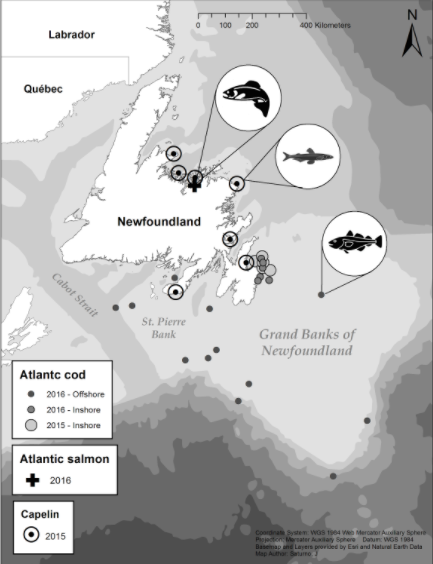
We are currently studying turbot, seal, several types of duck, and more cod. If you are a fish harvester or hunter and would like to work with us to investigate a particular species of animal that you eat (we need around 30 samples of one species to start), get in touch with our lab manager, Jessica Melvin (jmelvin@mun.ca).
Shoreline Plastics
Most of the data we work with on shoreline plastics come from citizen scientists using the Marine Debris Tracker app during beach clean ups. This is how we get a more complete view of the entire province. If you are part of a community team or organization that does beach clean ups and would like a training on the Debris Tracker app, please get in touch with our lab manager, Charlotte Florian (cflorian@mun.ca).


Urban waterway plastics in St. John’s
While conducting a training exercise in water and sediment sampling for microplastics in an urban lake in St. John’s, Newfoundland, we noticed the plastics in the sample were unlike other plastics we had encountered in the province: they were more plentiful, had great variation in type, and contained “tire dust.”
We created an urban waterway project, funded by OFI, which investigates whether and to what degree microplastics move through an urban stream urban water systems called Rennie’s River in St. John’s, NL. We use surface water sampling and snow sampling along the banks of Rennie’s River in multiple seasons to conduct this work.
